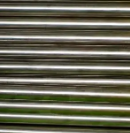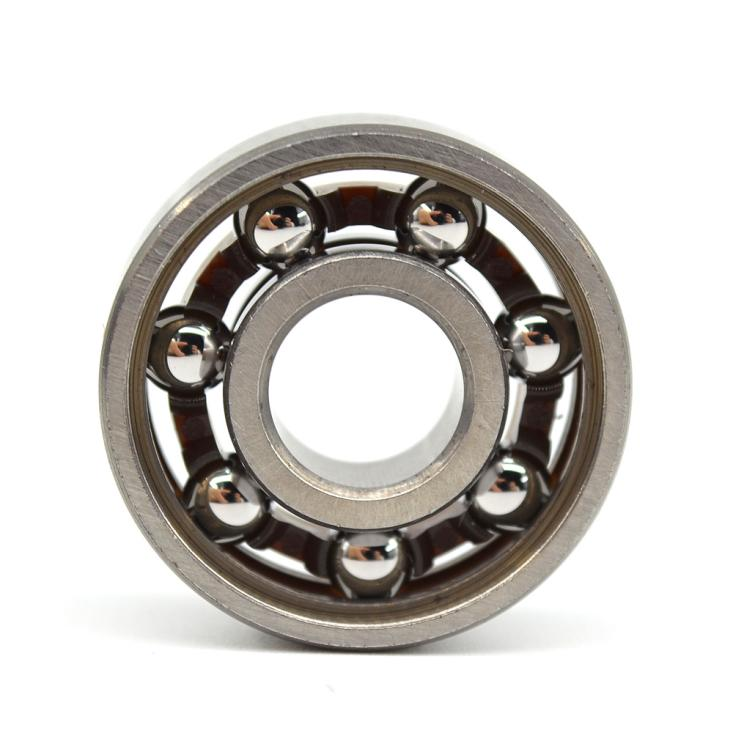Time : Janeiro 19, 2024
Abstract: Generally speaking, austenitic stainless steel has good corrosion resistance, but under special working conditions, stress corrosion can also occur, posing great safety hazards to engineering. This article discusses the conditions, corrosion mechanisms, and protective measures for stress corrosion of austenitic stainless steel, providing a basis for solving the problem of stress corrosion failure of austenitic stainless steel.
Keywords: chemical equipment; Austenitic stainless steel; Stress corrosion; Protective measures
In the production process of petrochemical industry, the corrosion phenomenon of petrochemical equipment is particularly prominent due to the frequent contact between equipment and highly corrosive media, and the processing environment often operates under high temperature and high pressure. Generally speaking, ordinary steel has poor corrosion resistance to highly corrosive media, while austenitic stainless steel has become an important corrosion-resistant material in the petrochemical industry due to its excellent mechanical properties and weldability, as well as unparalleled corrosion resistance compared to other ordinary metals. The corrosion resistance of austenitic stainless steel is due to the formation of an extremely thin, adhesive, and semi transparent chromium oxide film on its surface. Cr and Ni are the main alloying elements in stainless steel with corrosion resistance. Cr and Ni cause austenitic stainless steel to form a very dense oxide film in oxidizing media, passivating it, reducing the corrosion rate of stainless steel in oxidizing media, and improving the corrosion resistance of stainless steel. Once this film is mechanically damaged and destroyed, a chemical reaction between chromium in the steel and oxygen in the atmosphere can quickly restore it. But the corrosion resistance of stainless steel is targeted, that is, it is stable in media such as air, water, and neutral solutions, while corrosion damage may occur in other media. According to statistics, in equipment corrosion, the corrosion of austenitic stainless steel accounts for about half of all types of corrosion, and the stress corrosion phenomenon of austenitic stainless steel materials accounts for more than two-thirds of all material stress corrosion.
Stress corrosion refers to the low stress brittle fracture of metals under the combined action of tensile stress and specific corrosive media. Stress corrosion cracking is a sudden low stress brittle fracture that occurs at a fast corrosion rate, with severe damage, and often without significant macroscopic deformation or corrosion on the metal surface. Due to the suddenness and unpredictability of this brittle fracture, it has considerable danger.
Stress corrosion cracking is caused by the combined action of tensile stress and corrosion factors. In general, three conditions should be met to form stress corrosion fracture: (1) stainless steel with a certain chemical composition and organizational structure of a specific material, which is sensitive to stress corrosion in some media; (2) The residual tensile stress caused by sufficient tensile stress during the production and manufacturing process, as well as the unreasonable structural design of the product, is a necessary condition for producing stress corrosion cracking; (3) Stress corrosion fracture only occurs in specific corrosive environments under certain combination conditions of materials and media.
01 Stress corrosion cracking process
The process of stress corrosion cracking can be divided into three stages: the stage is the stage where corrosion causes cracks or pits, which is the nucleation and incubation stage of the crack source that leads to stress concentration, commonly known as the latent period or induction period; The second stage is the crack propagation stage, which is the stage where the crack source or corrosion pit develops to the so-called ultimate stress value that can withstand Z large load per unit area; The third stage is the crack propagation stage of unstable pure mechanics, which is the fracture period. The influence of stress on the stage is relatively small, but the time is relatively long, accounting for about 90% of the total fracture time.
02 Stress corrosion mechanism
In terms of the mechanism of stress corrosion, it is currently in the research stage. At present, various theories have been developed, and each theory has its own suitable combination, which can be summarized into three aspects:
Assumptions and theories on environmental factors
(3) Surface facial mask fracture theory This theory believes that the protective film on the metal (or alloy) surface, especially the grain boundary, is constantly damaged in the process of corrosion, which causes corrosion cracks to develop until they are destroyed.
Assumptions and theories on metal factors
Assumptions and theories regarding stress factors
The key point of this theory is that the hydrogen generated by the corrosion reaction under stress diffuses to the front edge of the expanding crack, forming highly activated hydrides or hydrogen strain ferrite (or bcc) perpendicular to the stress direction at that location α‘、α’ Martensite, causing embrittlement of the metal in that area. As stress corrosion progresses, hydrogen is continuously generated and diffused to the crack tip, and the crack continues to propagate forward. The initiation and propagation of metal corrosion fracture occur along a sensitive pathway formed by the diffusion and reaction of hydrogen in steel.
01 Select stainless steel materials with stress corrosion resistance
In recent years, various stress corrosion resistant stainless steels have been developed, mainly including high-purity austenitic chromium nickel steel, high silicon austenitic chromium nickel steel, high chromium ferrite steel, and ferrite austenite dual phase steel. Among them, the stress corrosion resistance Z of ferrite austenite dual phase steel is good.
02 Improve design structure
Try to avoid sudden changes in structural shape to reduce local high stress. The end of the connecting pipe should be polished with rounded corners to form a smooth transition. For connection points, larger rounded corners and smoothness should be selected.
03 Stress relief treatment
Post weld heat treatment is an effective method to reduce residual stress. The usual temperature for stress relief heat treatment is not suitable for austenitic steel. As it happens to be in the sensitization zone of austenitic steel, it is necessary to increase the heat treatment temperature to around 900 ℃ to achieve good stress relief effect. Due to the consistency between this temperature and the stabilization treatment temperature of austenitic steel containing stabilization elements, treatment at this temperature can achieve a win-win effect.
In addition, shot peening can be used on its surface to apply a certain amount of compressive stress, which can be offset by the generated tensile stress.
04 Using electrochemical methods for protection
The use of cathodic protection with external current or sacrificial anode cathodic protection can prevent stress corrosion, and can also stop the propagation of cracks after they form.
05 Adding corrosion inhibitors
If the process conditions permit, adding a certain amount of corrosion inhibitor can also achieve the effect of delaying the stress corrosion rate of austenitic stainless steel to a certain extent.
Corrosion and protection is an independent discipline that studies the corrosion process and corrosion control mechanism of structural materials, and takes measures to extend the service life of structural materials. The correct selection of materials and the adoption of appropriate protective measures are of great significance in extending the service life of equipment.

2024 January 3rd Week XZBRG Product Recommendation:
Stainless Steel Ball Bearings:
Stainless steel ball bearings can resist corrosion caused by moisture and other individual medium. 316 stainless which provides superior corrosion resistance when compared to conventional 440 stainless balls.
